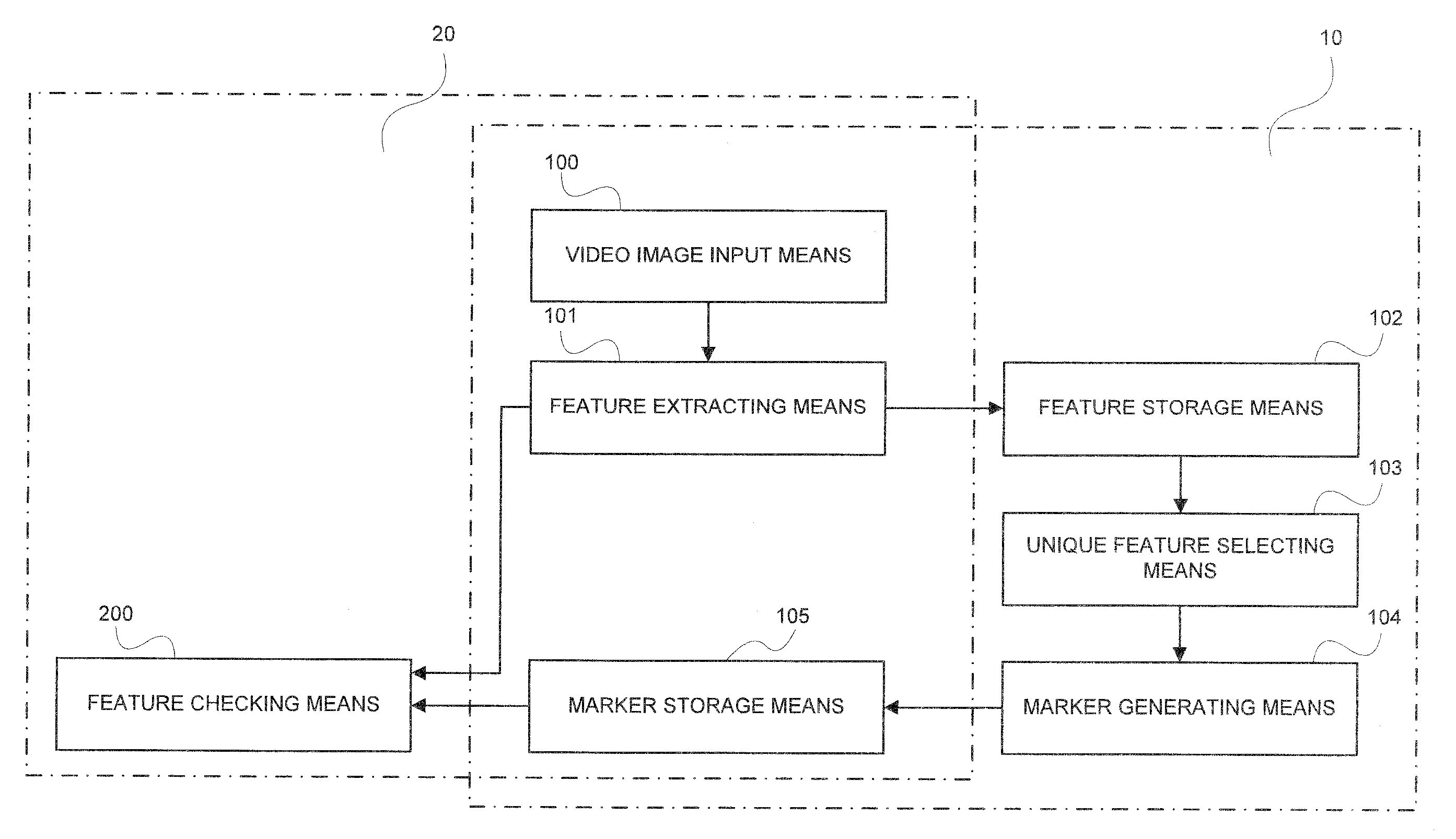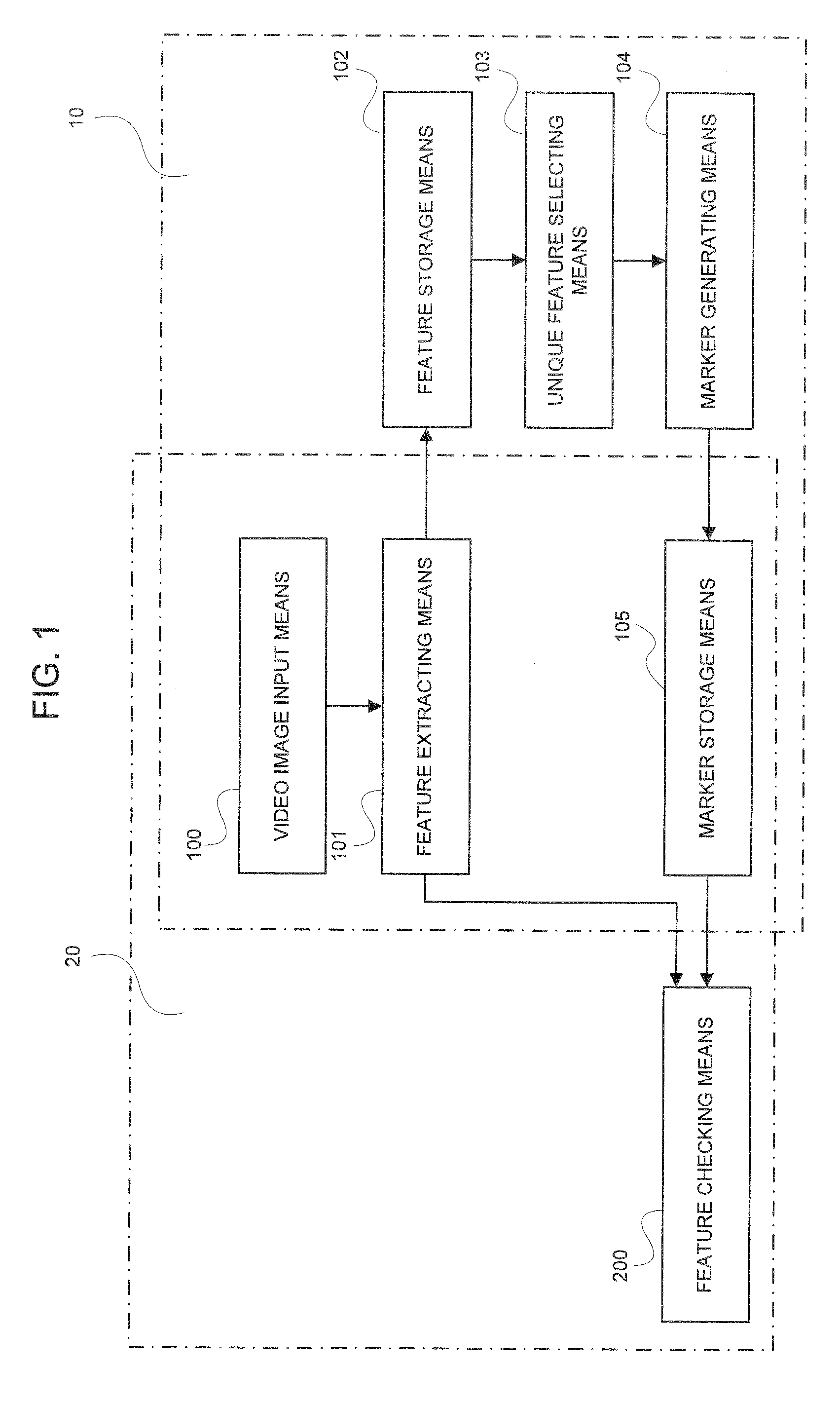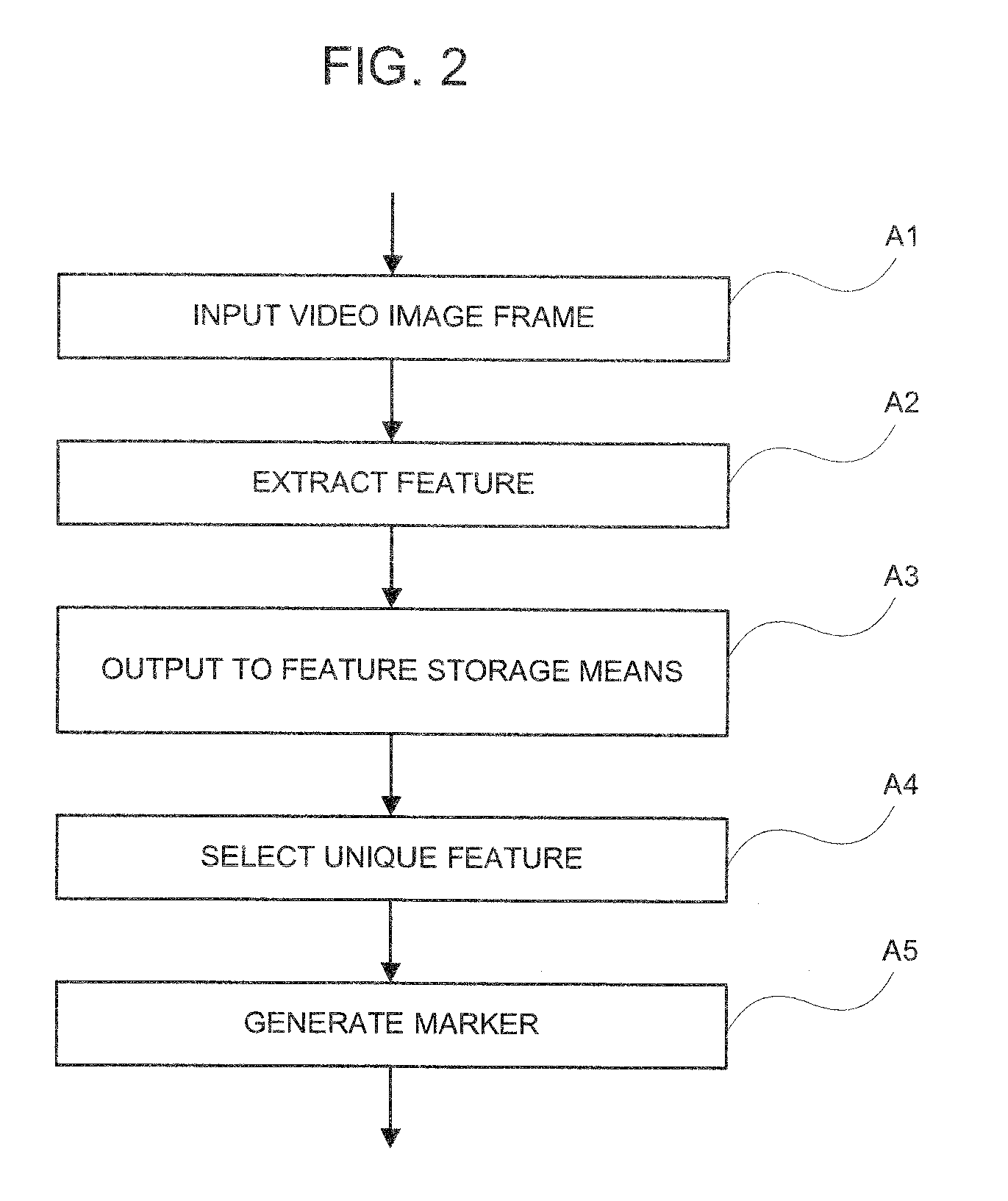Marker generating and marker detecting system, method and program
a marker generation and marker technology, applied in the field of marker generating and marker detecting systems, methods and programs, can solve the problems of low detection speed or instability, relative unreliability, and pattern confusion with each other, so as to improve the reliability of object detection, prevent misdetection, and reduce the difficulty of detection
- Summary
- Abstract
- Description
- Claims
- Application Information
AI Technical Summary
Benefits of technology
Problems solved by technology
Method used
Image
Examples
first embodiment
[0120]A first embodiment relates to the graphic marker generating section 10. The graphic marker generating section 10 is comprised of video image input means 100, feature extracting means 101, feature storage means 102, unique feature selecting means 103, and marker generating means 104.
[0121]The graphic marker generating section 10 is for, before actually attaching a marker to an object and performing marker detection, in an environment in which marker detection is applied, observing a background pattern, that is, a scene excluding the object to be detected, obtaining an occurrence frequency distribution of features, and based on the distribution, outputting a graphic pattern as a marker pattern that is never present in the background pattern.
[0122]The means constituting the graphic marker generating section 10 generally operate in a manner as described below.
[0123]The video image input means 100 inputs a video image containing an image of an environment to which the present inven...
second embodiment
[0145]Next, a second one of the best modes for carrying out the present invention will be explained in detail with reference to the accompanying drawings.
[0146]The graphic marker detecting section 20 of the present invention will now be explained in detail with reference to FIG. 1. The present invention relates to detection of a marker pattern from a scene.
[0147]The second embodiment relates to the graphic marker detecting section 20. The graphic marker detecting section 20 is comprised of video image input means 100, feature extracting means 101, marker storage means 105, and feature checking means 200.
[0148]These means generally operate in a manner as described below.
[0149]The video image input means 100 and feature extracting means 101 operate similarly to those in the first embodiment.
[0150]The marker storage means 106 stores therein marker patterns generated beforehand. When a marker pattern generated by the graphic marker generating section 10 in the first embodiment is used, ...
example 1
[0159]Next, a specific example will be explained.
[0160]First, an operation of marker design will be particularly explained with reference to a case in which a graphical feature is employed.
[0161]For a video image scene as shown in FIG. 6, feature point groups as indicated by shown in FIG. 7 are generated. An exemplary operation of selecting a unique feature from a quantized feature space will be explained hereinbelow. FIG. 8 shows a mesh having 8×8 cells obtained by mapping feature point groups onto a feature space and quantizing the invariant space from the result. In FIG. 8, a filled-in mesh cell indicates an occurrence frequency of non-zero, that is, indicates that a projection of a feature point is present within the mesh cell, and a non-filled mesh cell indicates a mesh cell having an occurrence frequency of zero.
[0162]According to the first embodiment, a unique feature is selected from the non-filled mesh cells. An example in which a center of a non-filled mesh cell is defined...
PUM
 Login to View More
Login to View More Abstract
Description
Claims
Application Information
 Login to View More
Login to View More - R&D
- Intellectual Property
- Life Sciences
- Materials
- Tech Scout
- Unparalleled Data Quality
- Higher Quality Content
- 60% Fewer Hallucinations
Browse by: Latest US Patents, China's latest patents, Technical Efficacy Thesaurus, Application Domain, Technology Topic, Popular Technical Reports.
© 2025 PatSnap. All rights reserved.Legal|Privacy policy|Modern Slavery Act Transparency Statement|Sitemap|About US| Contact US: help@patsnap.com



